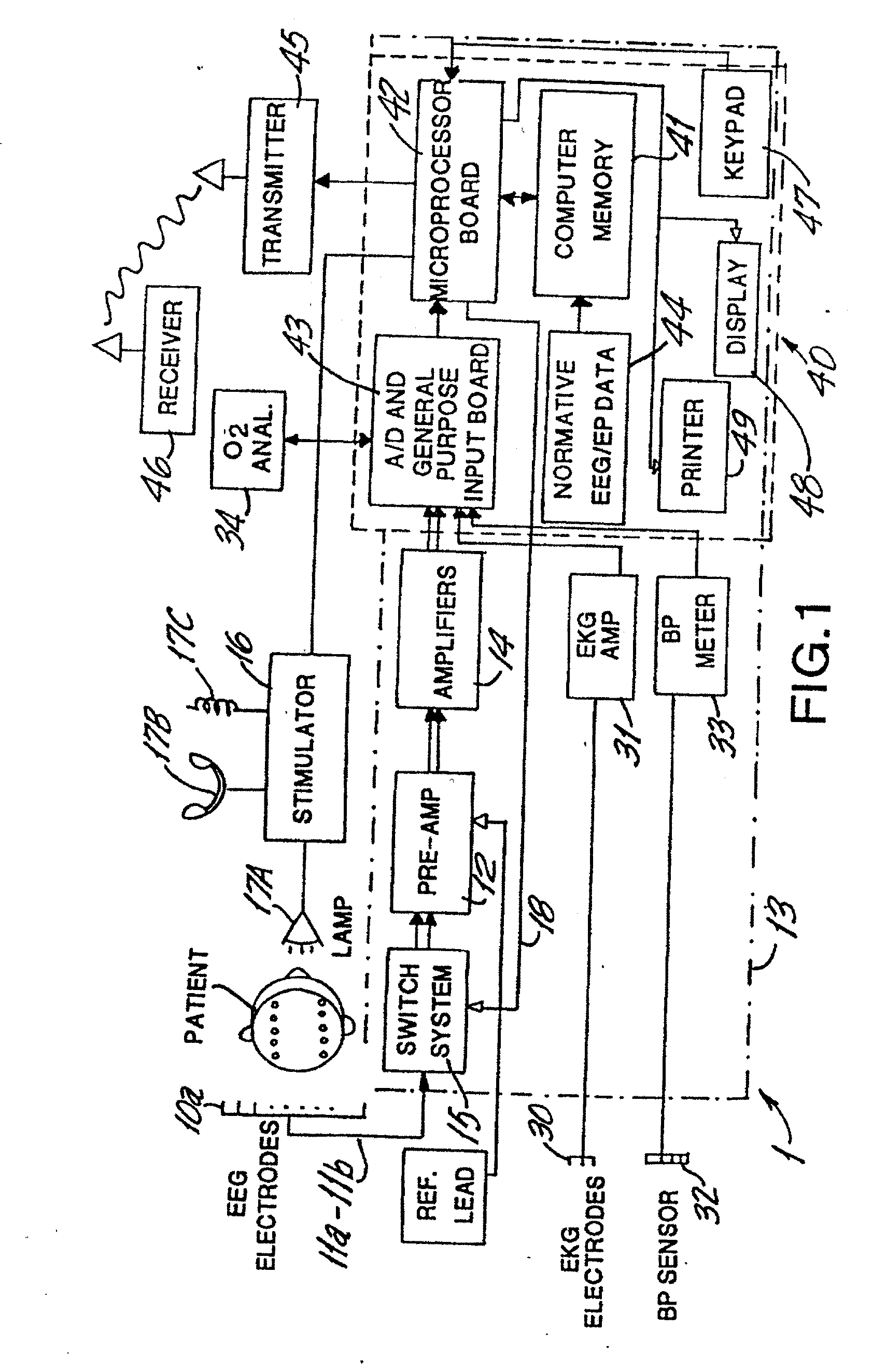Brain Function Scan System
a function scan and brain technology, applied in the field of brain function scan system, can solve the problems of difficult for emergency personnel to determine if a subject is suitable, inability to detect, and inability to provide optimal treatmen
- Summary
- Abstract
- Description
- Claims
- Application Information
AI Technical Summary
Benefits of technology
Problems solved by technology
Method used
Image
Examples
Embodiment Construction
Version 1
[0035] In the first embodiment, shown in FIG. 1, the instrument 1 is a small and inexpensive device which is portable and may be hand-held. It uses a computer system based on a conventional microprocessor, such as an Intel Pentium I™ and has a limited internal memory, for example, 100 MB.
[0036] The instrument 1 has 1-24 EEG amplifiers, each of which may be connected to a removable EEG electrode shown as electrodes 10a-10p. A suitable electrode uses an adhesive cover, which is removed before applying it to the scalp. The electrode may have multiple small barbs, a needle electrode or a conductive disk, which is removably attached to and may penetrate the patient's skin; the electrode may also use conductive gel, providing rapid attachment and acceptably low impedance, and may be sterile and disposable. In this, and other embodiments, a self-adhering electrode may be used, for example, the “ZIP-PREP”™ electrode having stainless steel micro-barbs in an adhesive gel patch, th...
PUM
 Login to View More
Login to View More Abstract
Description
Claims
Application Information
 Login to View More
Login to View More - R&D
- Intellectual Property
- Life Sciences
- Materials
- Tech Scout
- Unparalleled Data Quality
- Higher Quality Content
- 60% Fewer Hallucinations
Browse by: Latest US Patents, China's latest patents, Technical Efficacy Thesaurus, Application Domain, Technology Topic, Popular Technical Reports.
© 2025 PatSnap. All rights reserved.Legal|Privacy policy|Modern Slavery Act Transparency Statement|Sitemap|About US| Contact US: help@patsnap.com



